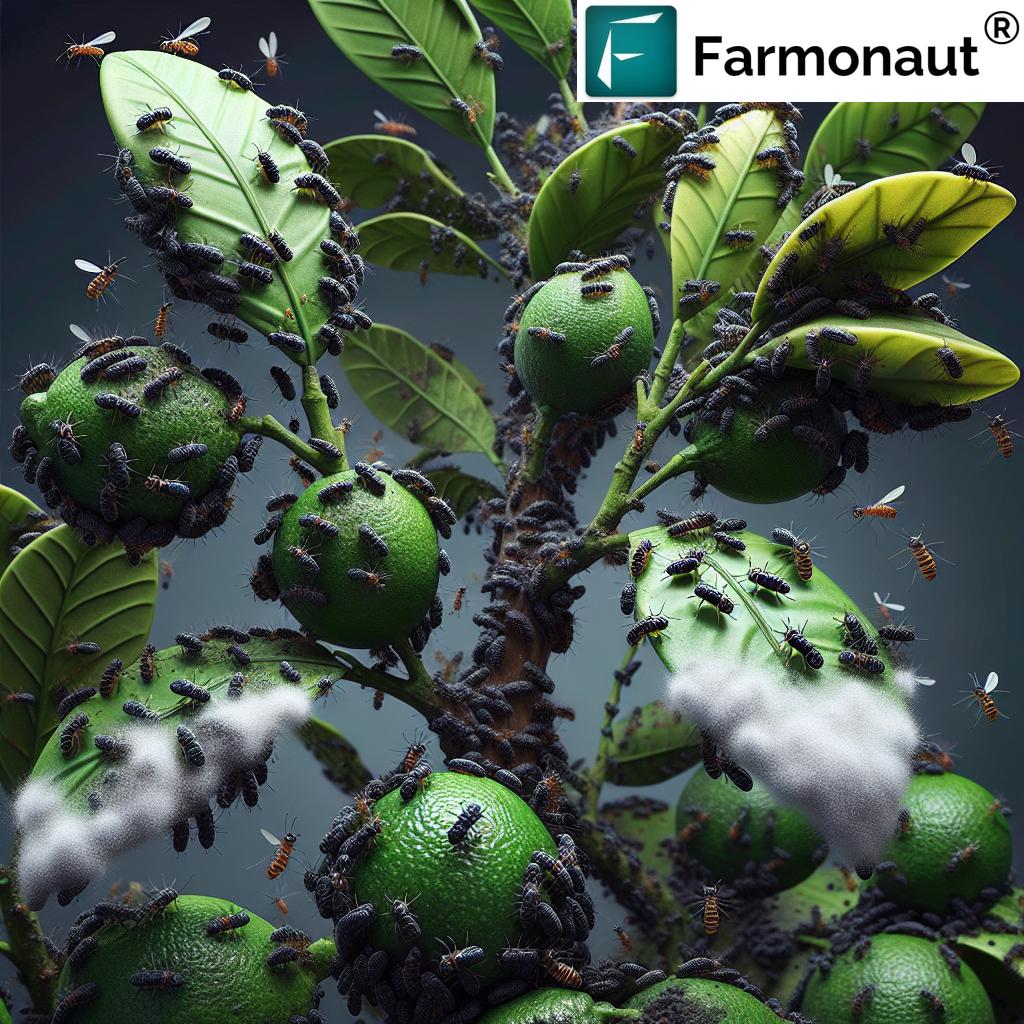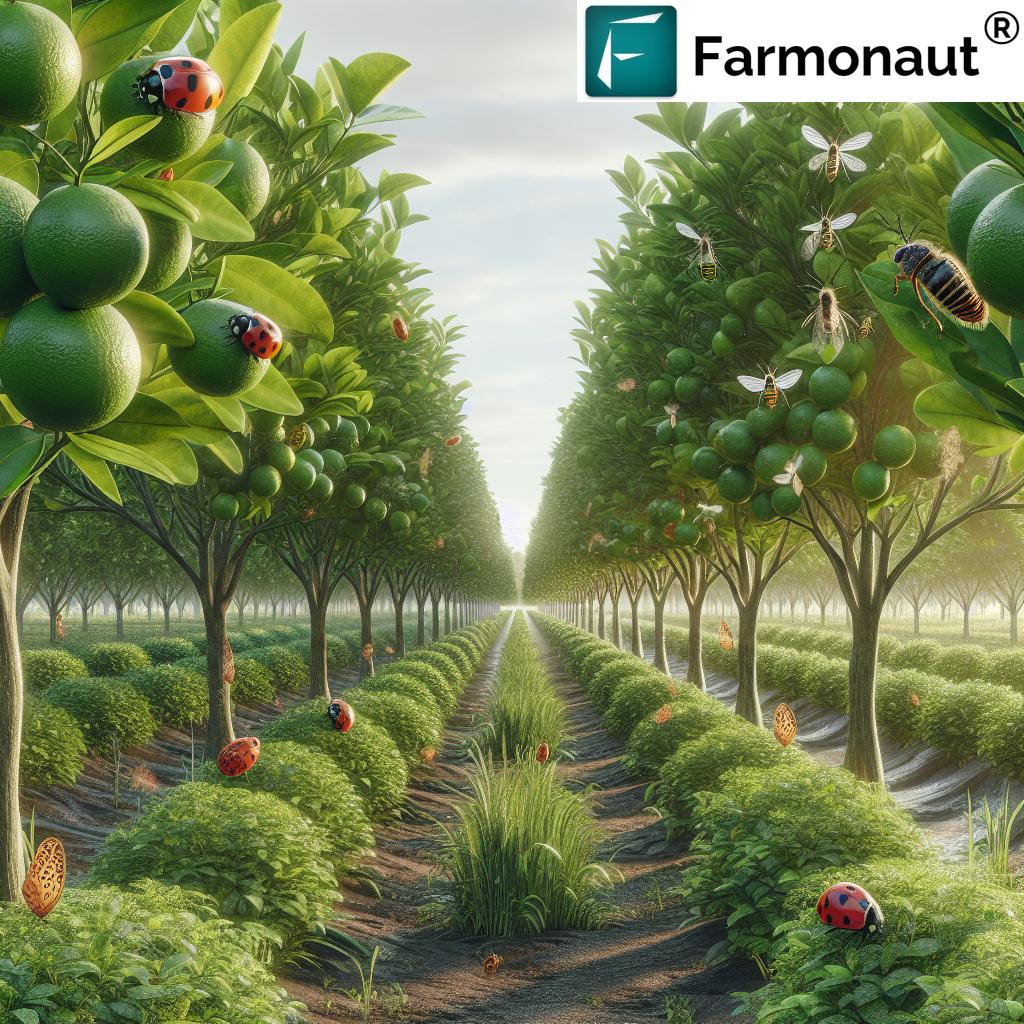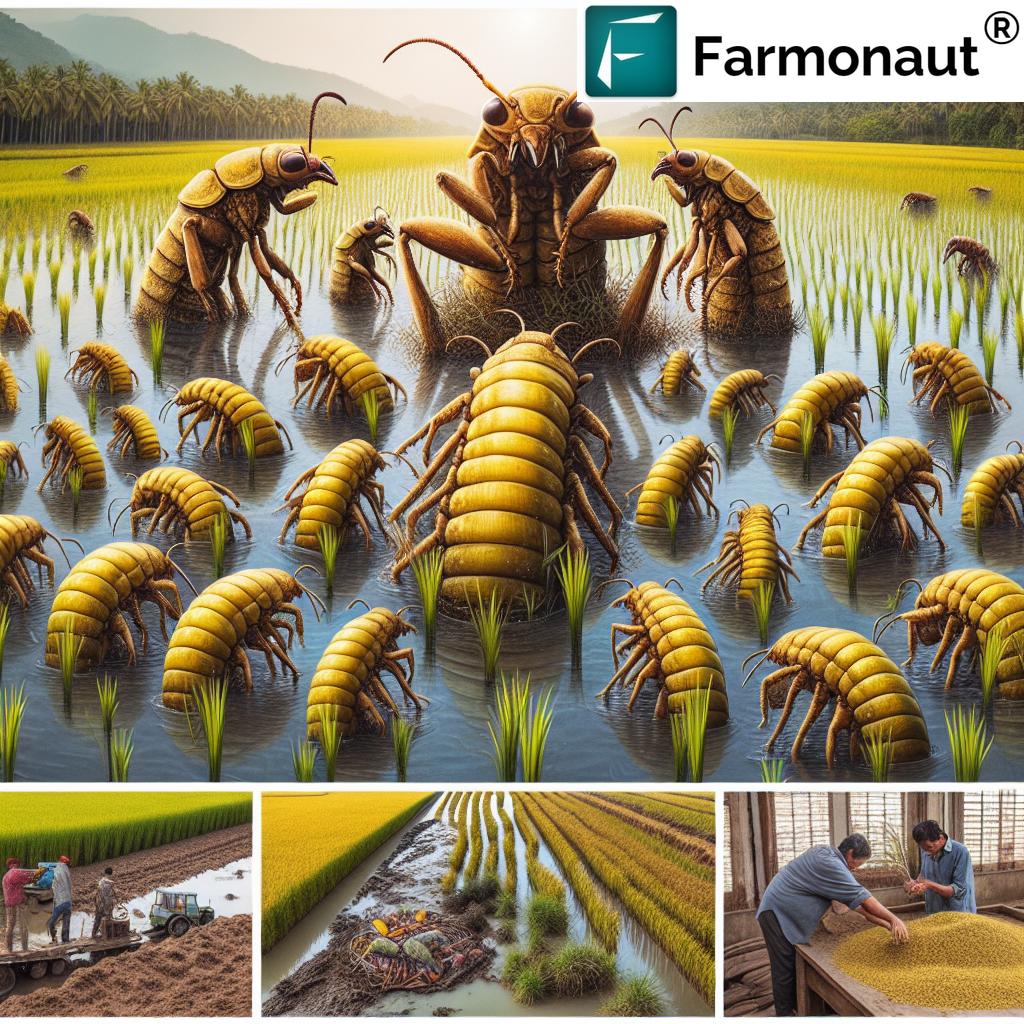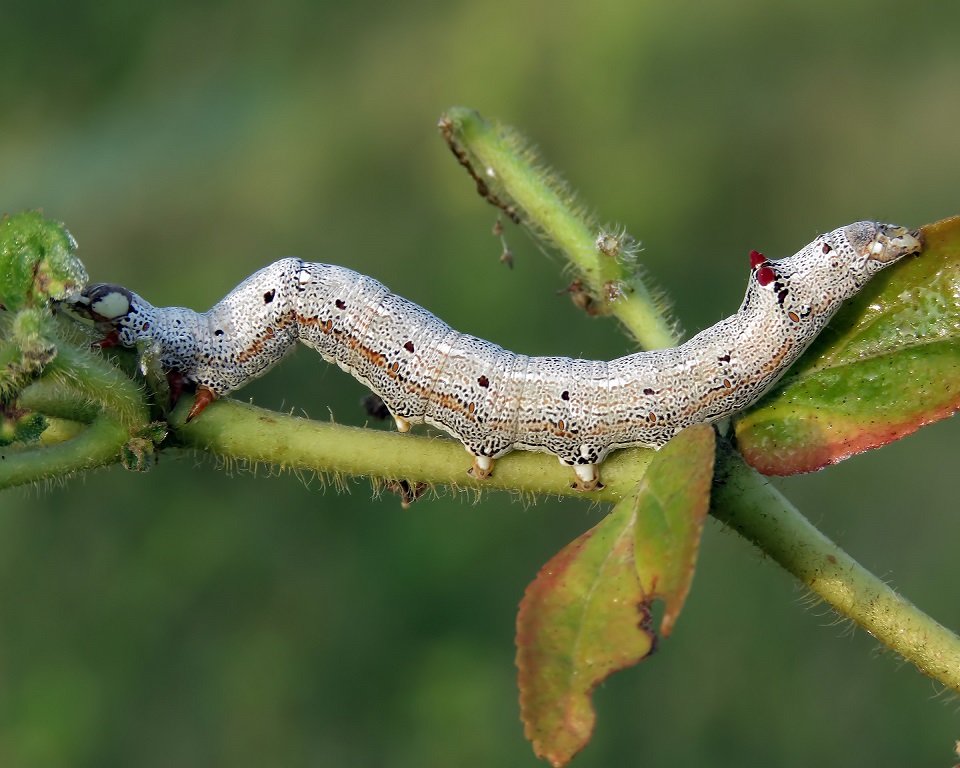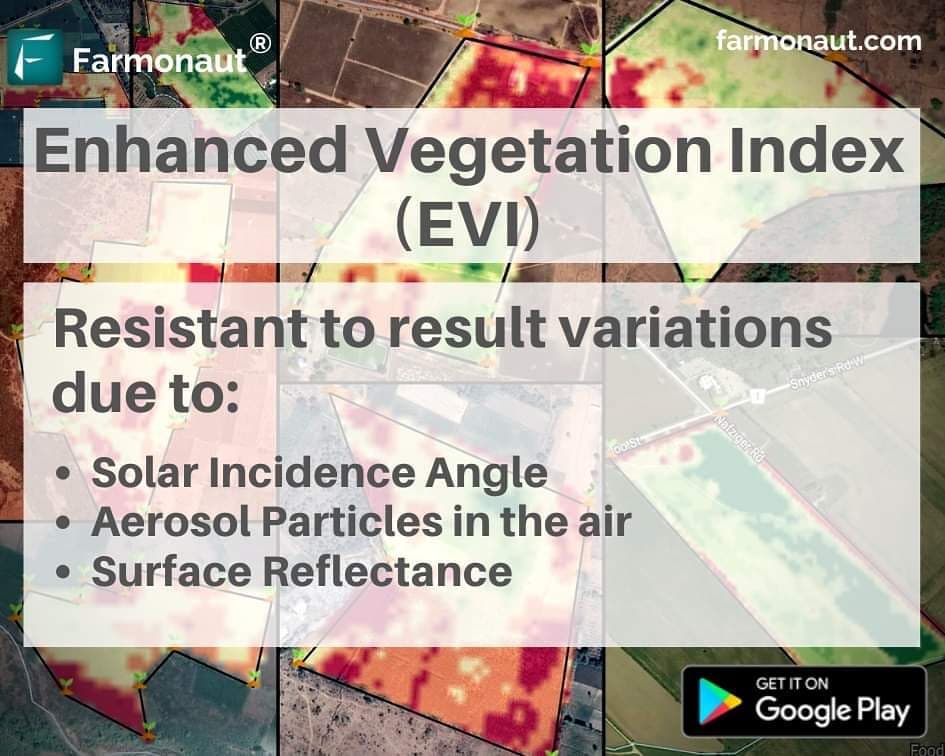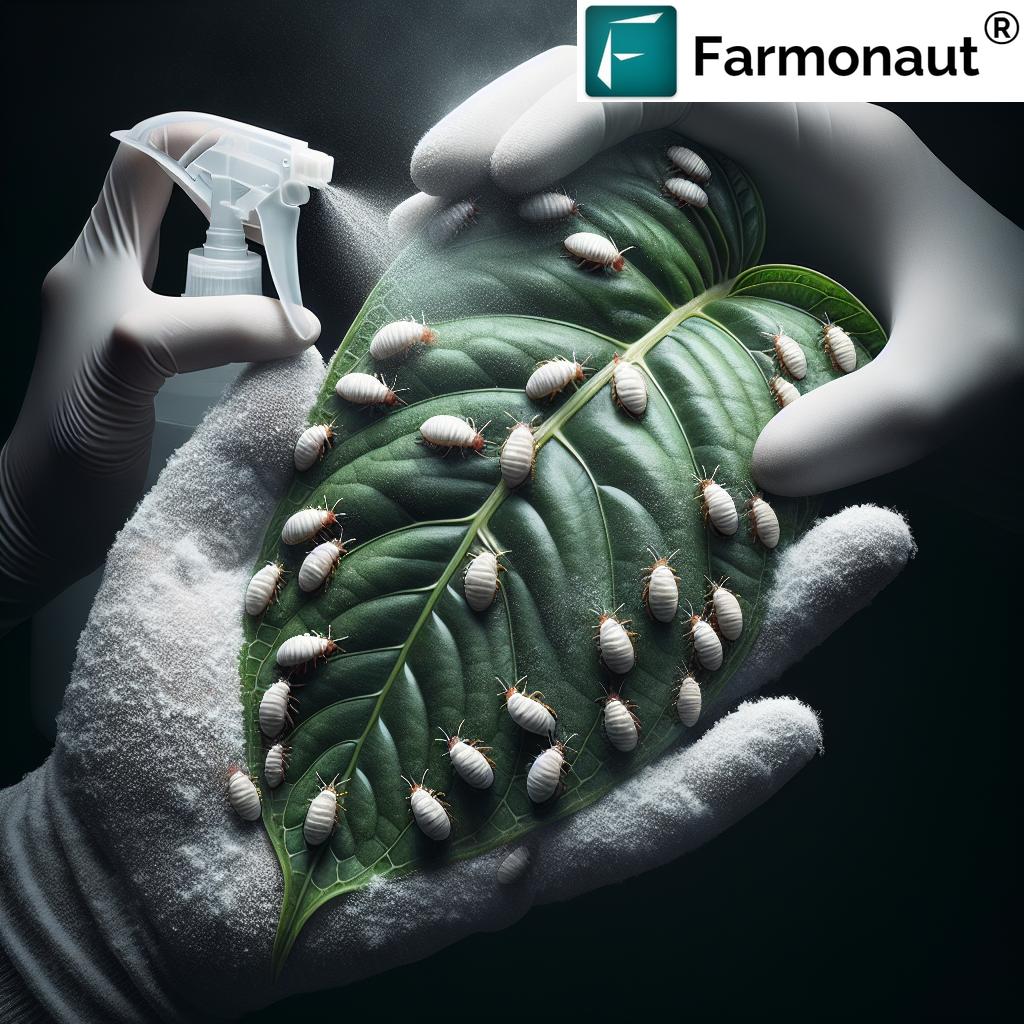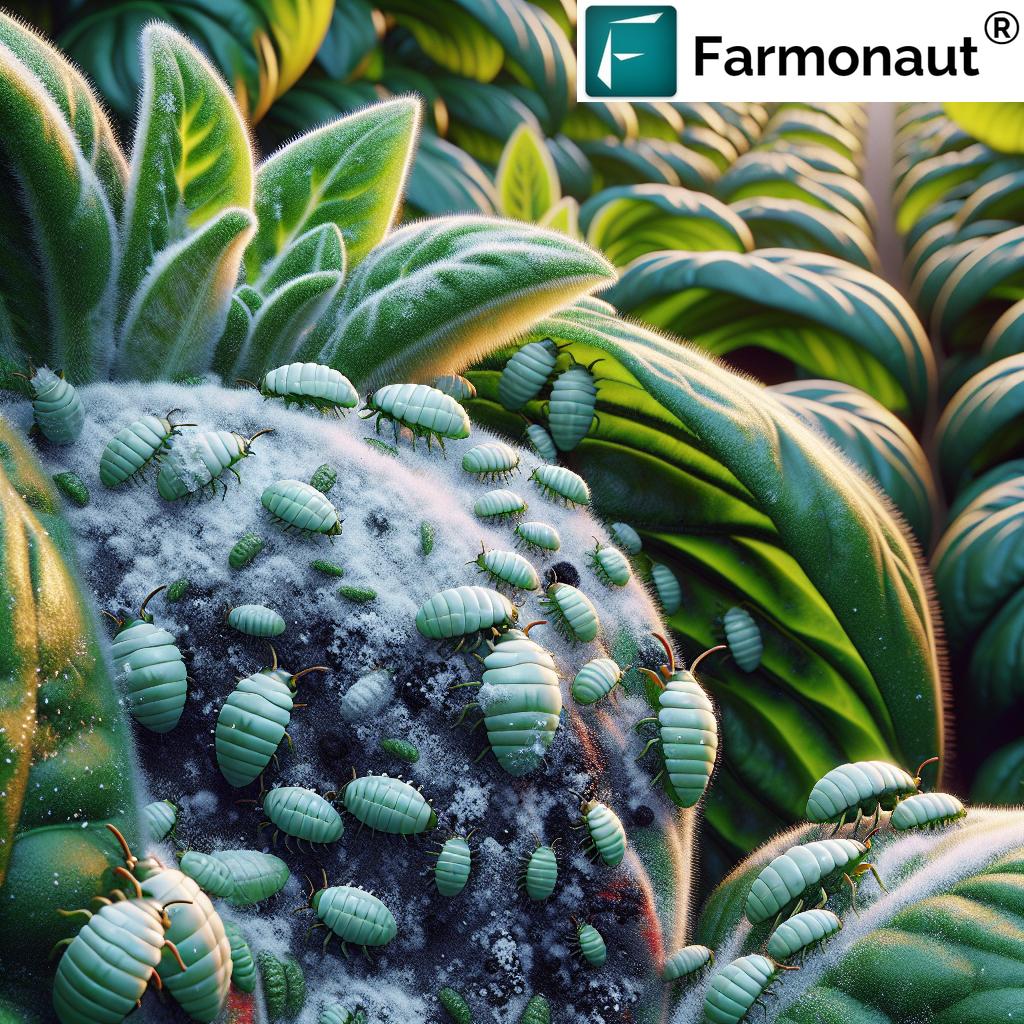Black Bugs on Lime Tree: 7 Powerful Pest Control Solutions
“Up to 80% of lime tree yield loss can be caused by unchecked black bug infestations and sooty mold.”
Table of Contents
- Understanding Black Bugs on Lime Trees
- Impact of Black Bugs on Lime Trees & Citrus Health
- Integrated Pest Management for Citrus: The Smart Approach
- 7 Powerful Pest Control Solutions for Black Bugs on Lime Trees
- Pest Solution Comparison Table
- Cultural Controls & Preventive Measures
- Supporting Healthy Citrus Orchards with Farmonaut
- Frequently Asked Questions: Black Bugs on Lime Tree
- Conclusion
Lime trees—prized for their tangy fruits, vibrant green foliage, and aromatic presence—form the backbone of many citrus orchards across tropical and subtropical regions. Yet, these beautiful lime trees are susceptible to a range of pests and diseases, many of which manifest as black bugs, sticky honeydew, and unsightly sooty mold on leaves and stems. Left unmanaged, these insects can jeopardize not only the visual appeal but also the productivity and longevity of lime trees. For both backyard gardeners and commercial citrus growers, understanding how to control black bugs on lime trees is critical for maintaining healthy, high-yielding trees.
In this comprehensive guide, we will:
- Identify the most common insect pests affecting lime trees
- Detail the impact of these pests on citrus health and fruit quality
- Present seven powerful, research-backed pest control solutions—each with clear steps and guidance
- Explore integrated, sustainable strategies with proven efficacy for improving lime tree health
- Showcase the latest innovations in citrus pest management, including Farmonaut’s precision agriculture tools
Let’s empower ourselves to protect our citrus crops from black bugs, promote orchard sustainability, and ensure that the fruits of our labor are abundant, healthy, and marketable.
Understanding Black Bugs on Lime Trees: A Citrus Grower’s Guide
As we inspect our lime trees and citrus orchards, we may notice telltale signs of trouble: sticky residues, blackened leaf surfaces, stunted growth, curled branches, or even reduced fruit yield. Quite often, these clues point towards black bug infestations—a term that encompasses various insect pests whose sap-sucking, honeydew-producing habits create the perfect environment for destructive fungus and disease.
Common Insects on Lime Trees Causing Black Residue
Let’s examine the pest species most frequently implicated in the “black bug” phenomenon:
-
Aphids (Aphis spiraecola):
These minuscule, pear-shaped bugs vary from greenish-yellow to apple green and feature dark heads and thoraxes. Aphids feed on lime tree sap, excreting a sticky substance known as honeydew, which serves as a substrate for sooty mold—a black fungus coating leaves and impeding photosynthesis. Aphis spiraecola is polyphagous, affecting over 65 plant genera, making regular monitoring essential for all citrus growers. -
Whiteflies (Orchamoplatus citri):
These tiny, winged insects are notorious sap-suckers. Their feeding on lime leaves also results in copious honeydew, promoting sooty mold. Whiteflies can transmit plant viruses and severely affect lime tree yield and appearance. -
Citricola Scale (Coccus pseudomagnoliarum):
Scale insects attach themselves to lime branches and foliage. As they feed, they excrete significant amounts of honeydew, supporting the relentless spread of black sooty mold. Heavy infestations can lead to branch dieback and reduced fruiting. -
Asian Citrus Psyllid (Diaphorina citri):
The psyllid is both a sap feeder and a devastating disease vector, responsible for the spread of citrus greening (huanglongbing). As it feeds, its honeydew again contributes to sooty mold formation.
These common lime tree pests are small in stature but mighty in their potential for damage. Accurate identification is our first step towards effective, sustainable citrus tree pest management.
Impact of Black Bugs on Lime Trees & Citrus Health
Unchecked, the presence of aphids, whiteflies, scale, and psyllids on lime trees can lead to a cascade of negative outcomes:
-
Reduced Photosynthesis:
Sooty mold produced through honeydew accumulation forms a dense black coating on leaves. This fungus impairs the lime tree’s ability to absorb sunlight, stalling photosynthesis and starving the tree of vital energy. -
Decline in Fruit Quality and Yield:
Covered in mold and honeydew, lime fruits lose visual appeal, impacting market value and yield. Severe infestations can trigger premature fruit drop and smaller, malformed limes. -
Heightened Vulnerability to Disease:
Certain pests, especially Diaphorina citri, transmit plant viruses and devastating diseases such as citrus greening, jeopardizing entire orchards. -
General Tree Stress:
Constant sap loss, fungal colonization, and disease transmission weaken lime trees, reduce productivity, and compromise long-term vitality.
“Integrated pest management can reduce black bug populations on lime trees by over 60% within a single growing season.”
Understanding these impacts highlights why knowledge of how to control black bugs on lime trees, as well as preventing honeydew on citrus and mitigating sooty mold on lime leaves, is central to maintaining healthy orchards.
Integrated Pest Management for Citrus: The Smart Approach
When it comes to integrated pest management for citrus, we advocate for a holistic system. This means leveraging cultural, biological, and chemical controls, grounded in regular monitoring and targeted interventions. Not only do we want to reduce pest populations and boost fruit yield, but we also strive to maintain ecological balance in our orchards.
- Cultural Controls: Actions that modify the orchard environment or management practices to naturally reduce pest pressure. These include timely pruning, proper sanitation, using disease-free planting material, and ensuring adequate air circulation.
- Biological Controls: Harnessing natural predators (like ladybugs, lacewings, parasitic wasps) and beneficial microorganisms to target and control insect pests affecting lime trees.
- Chemical Controls: The judicious use of targeted insecticides (such as horticultural oils, soaps, and in certain cases, systemic insecticides) while minimizing harm to beneficial insects and humans.
- Preventive & Monitoring Practices: Early identification, diversity in plantings, use of pest-resistant varieties, optimal spacing, and regular ecological assessments ensure better resilience and proactive responses to pest outbreaks.
7 Powerful Pest Control Solutions for Black Bugs on Lime Trees
To best illustrate how to control black bugs on lime trees, let’s break down the seven most effective strategies, blending practicality with evidence-based methods. Employing a mix of these solutions, in an integrated fashion, is key for healthy citrus trees and high fruit yield.
-
Neem Oil Spray
Neem oil is a time-honored, natural pesticide derived from the neem tree. When used as a foliar spray, it targets soft-bodied insects (aphids, whiteflies, early-stage scale) by disrupting their feeding and reproduction. Neem oil leaves minimal residue, making it safe for fruits and beneficial insects.
Application Tip: Spray a 0.5–1% neem oil solution on leaves, both upper and lower surfaces, every 7–10 days during pest outbreaks. Avoid spraying during strong sunlight to prevent foliage burn. -
Biological Control (Releasing or Attracting Natural Predators & Parasitic Wasps)
Biological control for citrus pests harnesses beneficial species. Release ladybugs, green lacewings, or parasitic wasps such as Tamarixia radiata to naturally reduce aphid, whitefly, and psyllid populations. Grow “companion plants” like dill, fennel, or marigold nearby to attract and sustain these predators.
Example: Ladybugs can consume up to 5,000 aphids in a lifetime! -
Insecticidal Soap
Plant-derived, minimally toxic insecticidal soaps kill insects by disrupting their cell membranes. They work best on direct contact, especially for aphids and whiteflies on leaves and shoots.
Application Tip: Mix as directed on the label, spray thoroughly, and repeat as needed. For persistent infestations, alternate with neem oil for broader coverage. -
Horticultural/Petroleum Oil Spray
Horticultural oils smother soft-bodied pests and scale insects while suppressing eggs, larvae, and even fungal spores.
Application Tip: Apply during mild conditions (not hot or freezing). Ensure even coverage for optimal scale and whitefly control, especially on leaf undersides and stems. -
Systemic Insecticides (Judicious Use)
Systemic insecticides such as imidacloprid or thiamethoxam are absorbed by the plant and target sap-sucking pests from within. Their use should be restricted to severe infestations, considering eco-toxicity and potential impacts on pollinators.
Application Tip: Apply strictly per label recommendations, preferably post-blooming, and avoid during pollinator activity. -
Manual Removal and Pruning
Prune out heavily infested branches, leaves, or shoots, and dispose of plant material far away from the orchard. Squash visible pests (aphids, scale clusters) during early stages; use a high-pressure water spray to knock pests off leaves.
Benefit: Manual removal reduces pest habitats, improves air circulation, and provides an immediate check on pest populations without chemicals. -
Companion Planting and Habitat Diversification
Intercrop lime trees with plants that attract natural predators or repel pests—dill, marigold, nasturtium, or buckwheat are excellent options. Improved biodiversity leads to stronger ecosystem balances, decreases pest outbreaks, and supports pollinator populations.
For best results, we should tailor our pest management plan by combining these solutions, suited to the life stage of both the pests and the lime trees in our specific environment.
Developers and businesses can access our Farmonaut API to integrate citrus tree pest data, satellite health reports, and more.
See the API developer docs here.
Pest Solution Comparison Table
| Pest Control Solution | How It Works | Application Method | Estimated Effectiveness (%) | Estimated Cost (per application) | Eco-friendliness (1–5 rating) |
|---|---|---|---|---|---|
| Neem Oil Spray | Disrupts feeding and insect growth, inhibits reproduction on soft-bodied pests | Foliar spray (0.5–1% solution) at 7–10 day intervals | 70–85% | $2–6 / tree | 5 |
| Biological Control (Predators / Wasps) | Beneficial insects prey on/parasite pest species, reducing populations naturally | Release/purchase predator insects, habitat creation via companion planting | 60–90% | $5–12 / tree | 5 |
| Insecticidal Soap | Breaks down cell membranes of soft-bodied pests on contact | Spray on affected foliage; repeat as needed | 65–80% | $3–5 / tree | 4 |
| Horticultural/Petroleum Oil Spray | Suffocates insects and eggs, suppresses sooty mold spores | Thorough leaf and stem spray, repeat as per pest cycle | 60–80% | $2–4 / tree | 4 |
| Systemic Insecticides* | Absorbed by tree, targets sap feeders through ingestion | Soil drench or trunk injection, only when necessary | 85–95% | $4–8 / tree | 2 |
| Manual Removal & Pruning | Physically eliminates pest breeding sites and visible bugs | Hand-pruning, removing infested material; water jet cleaning | 40–75% | $1–3 / tree | 5 |
| Companion Planting | Deters pests, provides predator habitat, improves biodiversity | Interplanting repellent/attractant flowers/herbs | 30–60% | Varies ($2–$5 / plot) | 5 |
*Systemic insecticide use should be a last resort, reserved for severe infestations and always applied with care to protect beneficial insects and pollinators.
Cultural Controls & Preventive Measures: Strengthening Your Citrus Tree Pest Management Toolkit
Preventing black bug infestations is far more efficient than reacting after pest populations have exploded. The following cultural controls and preventive measures should be standard in every lime orchard, backyard, or container garden:
Proactive Steps for Preventing Honeydew and Sooty Mold on Lime Leaves
-
Regular, Systematic Monitoring:
Inspect your trees weekly during the growing season. Look under leaves and branch angles for aphids, whiteflies, scale, and signs of feeding (blistered, curled, or sticky foliage). -
Pruning and Sanitation:
Prune dense branches to improve air circulation. Clear away fallen leaves, fruit, and any debris that could provide habitat for overwintering pests or diseases. -
Healthy Planting Material:
Begin with certified, pest- and disease-free young lime trees. Choose resistant varieties when available, as they’re less susceptible to common insect pests and viruses. -
Balanced Nutrition and Irrigation:
Do not overfertilize with nitrogen—it encourages succulent, pest-attracting new growth. Provide water at the base only to avoid raising humidity in the foliage. -
Optimal Plant Spacing:
Space trees to reduce humidity, support good airflow, and limit pest movement between trees. Adequate spacing also lets helpful insects travel efficiently. -
Companion and Diversified Planting:
Plant pollen- and nectar-rich flowers near your lime trees to attract beneficial predators (e.g., marigold, alyssum, dill, cilantro).
Make pest prevention a seamless part of daily orchard management by using Farmonaut’s crop monitoring tools to track vegetative health, detect early stress, and qualify for pest-related insurance faster.
Supporting Healthy Citrus Orchards with Farmonaut’s Precision Agriculture
Maintaining robust lime trees, free from the scourge of black bugs and sooty mold, requires timely insights and effective actions. This is where precision agriculture and Farmonaut’s advanced technologies can transform your approach to citrus tree pest management.
How Does Farmonaut Empower Citrus Growers?
- Satellite-Based Crop Health Monitoring:
Rapidly detect early pest infestations, stress, and disease risk across your orchards by visualizing NDVI, soil moisture, and foliage health trends in real time (web, Android, iOS, browser app, and via API). -
Jeevn AI Advisory:
Receive customized, AI-driven advice on pest management, irrigation, fertilization, and weather forecasts tailored to your lime orchard’s actual conditions. -
Blockchain-Based Traceability:
Enhance the trust and resale value of your fruits. Assure consumers of pest and disease-free practices with transparent, tamperproof supply chain records—see how at Farmonaut Product Traceability. -
Fleet and Resource Optimization:
Improve timing and efficiency for pest control application, pruning, and harvest via Farmonaut Fleet Management tools. -
Environmental Compliance and Sustainability:
Monitor and minimize your orchard’s carbon footprint while maximizing productivity.
With Farmonaut, lime growers gain affordable, scalable access to technology previously reserved for large-scale corporate agriculture—right on their smartphones or laptops.
Frequently Asked Questions: Black Bugs on Lime Trees
What are the most common black bugs found on lime trees?
The primary pests responsible for black residues on lime trees are aphids (Aphis spiraecola), whiteflies (Orchamoplatus citri), citricola scale (Coccus pseudomagnoliarum), and Asian citrus psyllid (Diaphorina citri). These insects suck sap and excrete honeydew, leading to sooty mold growth.
Why is my lime tree covered in black sooty mold?
Black sooty mold is a fungus that grows on the sticky honeydew excreted by sap-sucking pests. It can cover leaves, branches, and fruits, reducing photosynthesis and fruit quality.
How can I prevent honeydew and mold on my citrus trees?
Implement integrated pest management: regularly monitor for pests, encourage beneficial insects, use neem oil or insecticidal soap, prune infested branches, and maintain orchard sanitation. Preventing pest outbreaks stops honeydew and subsequent mold proliferation.
Are chemical insecticides always necessary for lime pest control?
No. Cultural and biological controls are usually sufficient if applied early and consistently. Chemical insecticides are reserved for severe infestations and should be used carefully to protect beneficial species and pollinators.
How can I improve the overall health and immunity of my lime trees?
Use disease-free planting material, balance fertilization, provide consistent irrigation, and practice proper pruning for air circulation. Preventive steps combined with precision agriculture monitoring (such as Farmonaut’s crop health platforms) enhance long-term tree resilience.
How does Farmonaut help in lime tree pest management?
Farmonaut provides real-time crop and pest monitoring via satellite, AI-powered recommendations for intervention timing, and tools for traceability, fleet management, and carbon tracking—making it easy to detect, prevent, and report pest outbreaks.
Conclusion: Towards a Resilient, Healthy Lime Orchard
Black bugs—aphids, whiteflies, citricola scale, and psyllids—present a significant challenge to lime tree health and productivity. Their honeydew secretions create the perfect environment for sooty mold on lime leaves, causing widespread reduction in photosynthesis, fruit yield, and overall orchard vitality.
By adopting a proactive, integrated pest management (IPM) approach, we can utilize the strengths of cultural, biological, and targeted chemical controls to keep these pests and associated diseases in check. Our toolkit should always start with regular orchard monitoring and good horticultural practices, escalate to natural and organic solutions, and only rely on chemical interventions when truly necessary.
Farmonaut’s affordable, accessible suite of precision agriculture tools empowers large and small-scale lime growers to spot pest problems faster, act more efficiently, and document high-quality, sustainable crop management. Together, we can cultivate thriving, resilient lime orchards and enjoy bountiful, healthy citrus harvests for years to come.
Related Resources:
Explore more about large scale farm management | Understand orchard carbon tracking | Learn about citrus traceability tools | Integrate Farmonaut API


